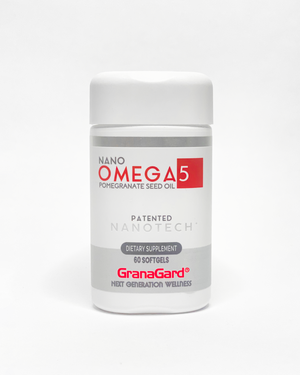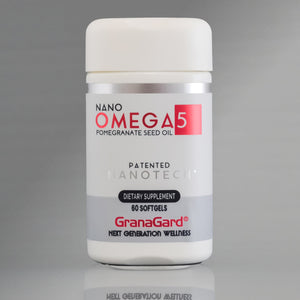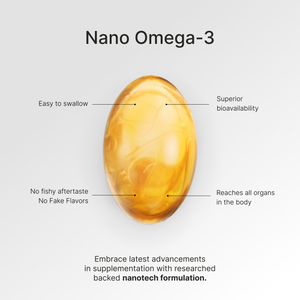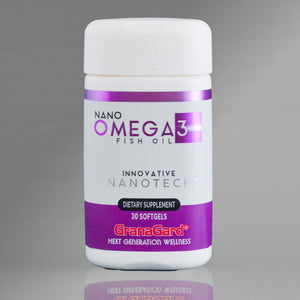In the United States, diseases related to atherosclerosis are the leading cause of death. It predisposes individuals to heart attacks and strokes. One of the factors that contribute to the onset and development of atherosclerosis is oxidative stress, so we have another good reason to eliminate it.
What is Atherosclerosis?
About half of Americans over the age of 45 have atherosclerosis and don't know it. It is a vascular disease characterized by the formation of plaque inside the arteries. This plaque gradually forms with substances circulating in the blood such as cholesterol, other fats, calcium, and inflammatory cells. The plaque that emerges inside the arteries blocks the normal flow of oxygenated blood that should reach all the body's organs. All the arteries in the body, including those of organs such as the brain, heart, and kidneys, can be affected by atherosclerosis.
Why Does Atherosclerosis Occur?
The arteries are lined on the inside by a thin layer of cells, known as the endothelium, which plays crucial roles like regulating blood pressure and maintaining normal blood flow.
Cells can respond to stimuli they are exposed to.
In endothelial cells, the stimulus can be the mechanical energy from the turbulence and friction forces generated by blood flow in the vessels, arteries, and veins. Each cell will respond to the specific stimulus it encounters, and sometimes the cellular response can be pathological.
Under certain circumstances, the endothelium starts to function “poorly,” losing its regulatory capacity in the face of chronic aggression, which is known as Endothelial Dysfunction. One of the causes that can trigger this dysfunction is Oxidative Stress. (Oxidative Stress myth or reality)
In areas where an atheroma plaque will develop, the endothelial cells initially activate into a pro-inflammatory state. This inflammatory response, along with other factors, promotes the generation of more free radicals at the site, meaning an increase in the presence of oxidizing agents that, if not neutralized by antioxidants (What are antioxidants in simple words) , leads to the appearance of oxidative stress, further damaging the endothelial cells and causing endothelial dysfunction.
How Atheroma Plaques Form
Endothelial dysfunction caused by oxidative stress leads to increased permeability to fatty products like LDL cholesterol, which can now pass through. Here, LDL cholesterol oxidizes, prompting defense cells, macrophages, to ingest them to eliminate them. However, this actually increases the inflammatory response; more defense cells are attracted to the site, releasing substances and free radicals that worsen the progression of atherosclerosis. The net result of the accumulation of fats and cells attracted to the site is the formation of a lesion that protrudes inside the artery, reducing the space or lumen through which blood flows.
These plaques or atheromas can be stable, growing to block the artery lumen without rupturing. Another type of plaque, known as unstable plaque, can rupture inside a blood vessel, exposing the internal fibers of the artery and triggering the formation of a thrombus (clot) that will acutely block the artery. Depending on the location of the lesion, the manifestations will vary. If the process occurs in a coronary artery, which supplies the heart, the result will be a heart attack; if it's in a cerebral artery, it will be a stroke. All the cells that rely on oxygen and nutrition from the blocked artery will die, and thus the size and consequences of the lesion.
How Antioxidant Supplements Help
Atherosclerosis is a major cause of morbidity and mortality worldwide. Due to the fact that free radicals and oxidized LDL cholesterol are major contributors to the progression of atherosclerosis, dietary antioxidant supplements represent a good strategy to prevent the progression of the disease.
The mechanisms by which antioxidants help prevent or slow the progression of atherosclerosis are several: inhibition of LDL cholesterol oxidation, reduction of free radicals generated, inhibition of inflammatory cytokine secretion, prevention of atherosclerotic plaque formation and platelet aggregation, prevention of mononuclear cell infiltration, improvement of endothelial dysfunction, and vasodilation, among others.
Which Antioxidant Supplement to Choose
Not all antioxidant supplements are the same; they differ in their physicochemical characteristics and their mechanisms of action. Regarding the former, solubility is an important difference: some antioxidants are liposoluble, meaning they dissolve well in fats but not in water, while others are hydrosoluble, dissolving well in water but not in fats.
The other difference lies in their mechanism of action. While some have a simple mechanism like directly trapping or neutralizing free radicals, others are more comprehensive as they not only neutralize free radicals but also stimulate the production of internal antioxidants.
Omega 5, (What are the benefits of Omega 5) a powerful natural antioxidant with more than one antioxidant mechanism, is an oil extracted from pomegranate seeds. Recently, through nanotechnology, (What is Nanotechnology in simple words) Omega 5 has been transformed into a nanoemulsion, allowing it to dissolve equally in water and fats. Its nanometric size (molecular) enables it to pass through barriers and membranes, reaching every corner of the body to protect it.
Considering that the composition of our organs and tissues is variable—some have a higher fat percentage, while others have more water; some organs, like the brain, are protected by barriers; and atherosclerosis can affect any artery in the body… Selecting GranaGard®'s Nano Omega 5 is the smartest choice.
If you're an adult over 40 and want to help prevent atherosclerosis, protect yourself with Nano Omega 5 from GranaGard® Start today!





